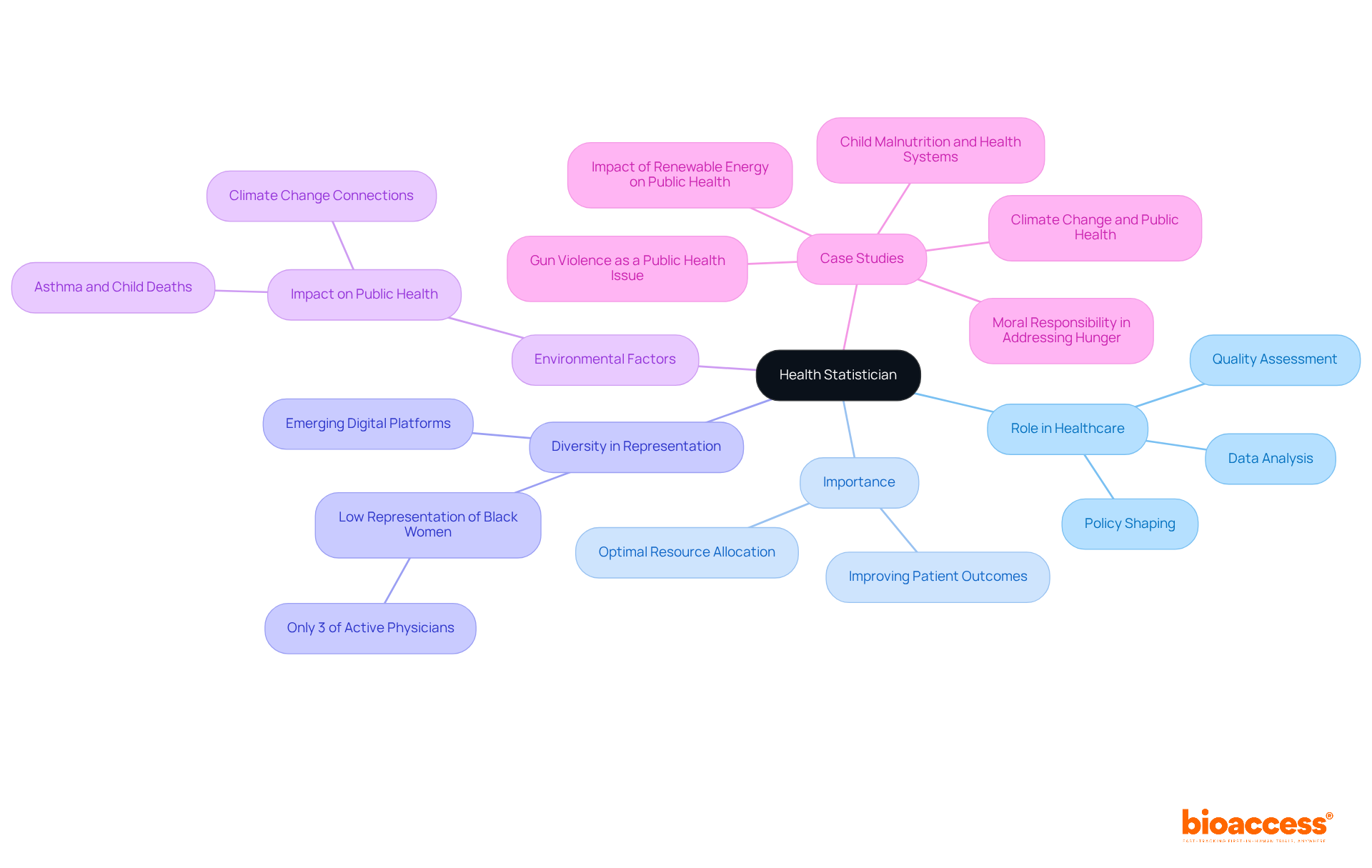


The role of a health statistician in healthcare is pivotal, as they employ statistical methods to analyze health data, yielding insights that shape public health policies, clinical practices, and medical research. Their responsibilities in data management, analysis, and communication are crucial; they ensure that healthcare decisions are grounded in evidence, ultimately enhancing patient outcomes and optimizing resource allocation. This significance underscores the necessity of their expertise in navigating complex health data landscapes, where informed decisions can lead to substantial improvements in healthcare delivery.
The intricate world of healthcare relies heavily on data; however, the professionals who translate this data into actionable insights often remain in the shadows. Health statisticians play a pivotal role in shaping public health policies and clinical practices by employing advanced statistical methods to analyze health information. As the demand for data-driven decision-making in medicine grows, what challenges do these experts face in ensuring their findings lead to improved patient outcomes and resource allocation? Understanding the multifaceted responsibilities and evolving significance of health statisticians unveils the critical impact they have on the future of healthcare.
A health statistician is a professional dedicated to employing statistical methods to examine and interpret information related to wellness. As a health statistician, their role is vital in medical care, providing insights that shape public wellness policies, clinical practices, and medical services research. By leveraging statistical techniques, health statisticians help identify trends, evaluate treatment effectiveness, and assess the quality of care. The role of a health statistician is essential for ensuring that medical decisions are grounded in robust evidence, ultimately leading to enhanced patient outcomes and optimal resource allocation.
For instance, only 3% of active physicians are Black women, underscoring the urgent need for diversity in medical representation—an area where health statisticians can play a critical role through data analysis. Moreover, expert opinions underscore the connection between well-being and environmental factors, as articulated by Dr. Margaret Chan, who stated, "A ruined planet cannot sustain human lives in good condition." This statement highlights the broader implications of wellness statistics that a health statistician can use in addressing public health challenges.
Additionally, case studies illustrate the tangible applications of medical statistics. A collaborative effort between food security and wellness initiatives demonstrated how data analysis could effectively reduce child malnutrition, showcasing the potential for data analysts to drive significant advancements in public well-being. As the medical field continues to evolve, the role of health statisticians will remain indispensable in fostering a healthier community through informed, data-driven strategies.

The function of medical data analysts has undergone significant transformation since the early days of medical services. Initially, statistical analysis was basic, concentrating primarily on mortality rates and fundamental demographic data. However, with the advent of advanced computing technologies and the increasing complexity of medical systems, the role of health statisticians has expanded considerably. Today, health statisticians employ sophisticated statistical models and software to analyze extensive datasets, playing a crucial role in evidence-based medicine and public health initiatives. This evolution reflects a broader shift towards information-driven decision-making in the medical field, underscoring the critical need for skilled experts capable of accurately interpreting complex information.

A health statistician plays a crucial role in healthcare, encompassing a variety of responsibilities that ensure the effective use of data in decision-making processes. Their contributions are vital for advancing medical practices and improving overall patient outcomes.
Information Gathering and Management: They create and establish strong information collection techniques, ensuring that the details obtained are both precise and pertinent to healthcare requirements. This includes understanding the trustworthiness of information sources, as inadequate information management can result in serious repercussions for clinical outcomes.
Utilizing advanced statistical software, health statisticians conduct statistical analysis to examine health information, uncover trends, correlations, and causal relationships that inform clinical practices and public health policies. Quantitative tools are essential in establishing a strong foundation for these analyses, allowing for methodologically sound conclusions.
Reporting Findings: They prepare detailed reports and presentations to effectively communicate their findings to healthcare professionals, policymakers, and stakeholders, facilitating informed decision-making. This communication is vital for translating complex data into actionable insights.
Collaboration: Medical data analysts work closely with researchers, clinicians, and public officials, fostering collaboration that enhances the quality of medical interventions and policies. Their role as a health statistician is interconnected with various professionals, ensuring that statistical insights are incorporated into broader medical strategies.
Quality Assurance: Preserving the integrity and excellence of information is crucial; wellness analysts enforce strict protocols to maintain high standards in information management, ensuring dependable results for medical initiatives. As emphasized by industry specialists, the quality of data directly influences the effectiveness of medical solutions.
Through these duties, health analysts greatly aid in the progress of medical practices and the enhancement of overall outcomes.

To excel as a health statistician, individuals typically need to have a strong educational background in statistics, mathematics, or a related field, often obtaining a master's or doctoral degree. Key skills include:

The essential role of health statisticians in healthcare is paramount, providing critical insights that inform medical decisions and public health policies. By employing advanced statistical methods, these professionals transform complex data into actionable information, ultimately enhancing patient outcomes and optimizing resource allocation within the healthcare system.
Key points throughout the article highlight the evolution of health statisticians from basic data analysts to sophisticated contributors in evidence-based medicine. Their responsibilities encompass:
Each of these elements underscores the significance of health statisticians in navigating the complexities of modern healthcare.
In a world increasingly driven by data, the contributions of health statisticians will continue to play a pivotal role in shaping the future of healthcare. As the demand for evidence-based practices grows, the need for skilled professionals in this field becomes even more critical. Embracing the insights provided by health statisticians not only enhances public health initiatives but also promotes a healthier society overall.
What is the role of a health statistician?
A health statistician employs statistical methods to examine and interpret information related to wellness, providing insights that shape public wellness policies, clinical practices, and medical services research.
Why is the role of a health statistician important in healthcare?
The role is vital because health statisticians help identify trends, evaluate treatment effectiveness, and assess the quality of care, ensuring that medical decisions are based on robust evidence, which leads to improved patient outcomes and optimal resource allocation.
How does diversity in medical representation relate to health statistics?
The low percentage of Black women among active physicians (only 3%) highlights the need for diversity in medical representation, an area where health statisticians can contribute through data analysis to advocate for better representation.
What connection exists between wellness and environmental factors according to health statisticians?
Health statisticians analyze data that reflects the connection between well-being and environmental factors, as emphasized by experts like Dr. Margaret Chan, who noted that a ruined planet cannot sustain human lives in good condition.
Can you provide an example of how medical statistics have been applied in real-world scenarios?
A case study involving a collaboration between food security and wellness initiatives demonstrated that data analysis could effectively reduce child malnutrition, showcasing the potential for health statisticians to drive advancements in public well-being.
What is the future outlook for health statisticians in the medical field?
As the medical field continues to evolve, the role of health statisticians will remain indispensable in fostering a healthier community through informed, data-driven strategies.